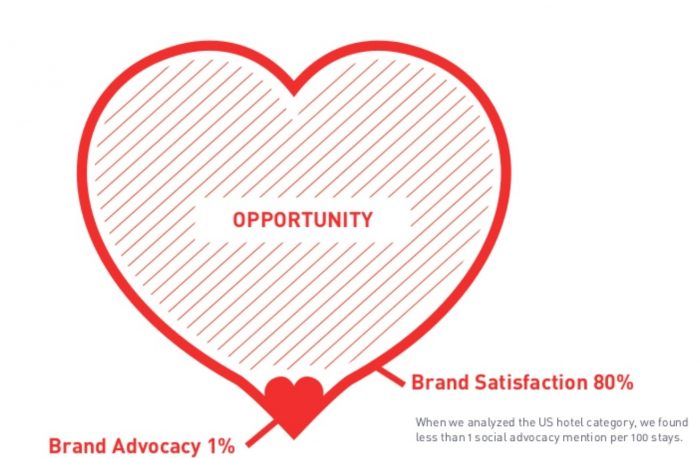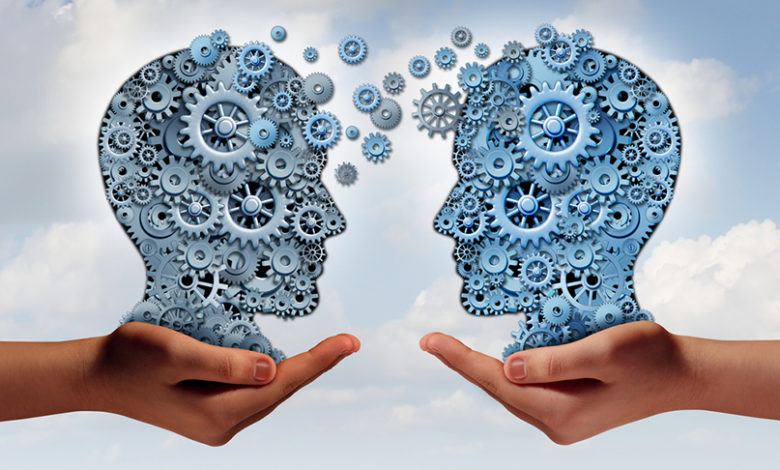Brand influencers and advocates are key to driving reach and sales yet most companies fail to activate well. Both customers and employees are a source of untapped growth that companies need to focus more effort on. Here’s how to maximise employee and customer advocacy.
People trust people they know and/or respect. They trust them when they want help and they trust them when they make choices about products and services. It’s innate to being human and has been driving human relations, and business, for millennia.
On the flip side, people don’t trust companies nearly as much. Yes, some companies manage to gather more trust than others, usually because they have great products, great values and, of course, great people.
Yet most companies shy away from, or execute very poorly, programs to activate and amplify one of their greatest assets. Their employees and customers who already think they are great.
No traditional marketing needed. No persuasion to the benefits of the product. They already believe in you. You just have to find a way to get them engaged in the process.
The advocacy gap
If you look at brand mentions online, only 15% are very positive (ie. imply potential advocacy). This is true even from brands that have very high customer satisfaction scores. For example, a US hotel chain with satisfaction scores in the region of 90% still only gets one ‘customer advocacy mention’ per 100 stays.
Clearly, this is only digital advocacy, and most of us still do much of our advocacy face to face with those closest to us, but as a proxy it’s not very encouraging. Not even movies have overcome this gap with less than one advocacy mention per 100 movie tickets sold. Perhaps there are even more bad movies out there than I thought!

Closing the advocacy gap is worth £billions in increased sales to any company that can deliver
an experience where advocacy is both likely and encouraged.
Customer loyalty is not an indicator of customer advocacy
One very common mistake is to make the assumption that ‘loyalty’ metrics such as purchase frequency and value is an indicator of advocacy.
Loyal customers might like your product and might think they have made the right choice (although even that is not always the case), whereas advocates truly believe they made the right choice and have usually formed an emotional tie to the business and the experience they had.
Loyal customers may be loyal for a variety of reasons. Convenience, lack of other options, lack of time to research other options, etc. My personal example is United Airlines. I was a frequent flyer for several years – sometimes doing dozens of legs in a single month. I was inundated with loyalty bonuses, some such as priority upgrades – most welcome, but would I recommend United?
Never! Not even if they had the last planes left flying. How long is the drive instead, I would wonder (I did ask myself this on more than one occasion!). Is there a train? Can you just flap really hard?
What they didn’t understand from their ‘loyalty data’ is that I was loyal because of where I lived (20 minutes from Newark Airport) and where my clients were based. My options were limited.
The reality was that I flew on old planes with seats that gave me a bad back (try the Newark to MSP flight and you’ll get it), dealt with a crappy airport, a disproportionate number of grumpy staff and was usually paying through the nose (people don’t fly to MSP in January unless someone else is paying the bill or someone has died. You just don’t, and they knew it when setting their prices).
The truth was that I was in fact a detractor who often actively discouraged others from choosing United. Of course, this is an extreme example, but average is often fine for loyalty but never good enough to drive advocacy.
Amplification – 80% of your reach can come from customer advocacy
Even given the advocacy gap highlighted above, an Ogilvy study of more than seven million brand mentions in four countries, showed that as much as 80% of a brand’s ‘reach’ was through amplification of brand messages activated by social media and other digital channels.
What the study found is that despite the opportunity being significant, ‘brands are failing at driving satisfied customers to share in social media and failing to activate employees to actively engage with their customers’.
Make everyone an advocate
In a fragmented media landscape it’s no longer possible to be everywhere in the buyer journey or attempt to buy paid media across all the options available. Instead you need to leverage your ‘people’ channel.
Some considerations when activating advocacy:
- Making it easy to do – set up systems that are easy. Sharing or recommending must be intuitive. Don’t use it as an opportunity to collect data, like one organisation I worked with: “But it means they are our most valuable customers, let’s find out who they are?” Let’s not.
- Rewards versus awards – we see lots of companies jumping to a reward-based system for influencers and employees. They might work, but don’t assume it’s the right route for everyone. Paying someone to do something disrupts the equilibrium in the transaction. Sometimes just giving people recognition (or other awards) is enough.
- Have a clear story that everyone can use – server business Equinix discovered through research that a third of employees were not confident explaining the company story. With 6,000 employees, this mattered. By providing training and clarity employee advocacy rose significantly.
- Be creative with how you encourage customer advocacy – make it fun. Think a little. Too often advocacy programs are boring and lack any inspiration. Old Navy traditionally dedicated its media budget to TV, particularly around back-to-school time. However, over the past few years, it has focused on digital content to engage kids around positive life experiences and giving back. Through this approach, #MySquadContest led to 32,000 kids sharing their ‘squads’ of friends for a chance to win an epic day with their favourite influencer, creating three million video views, a 60% increase in social conversation about @OldNavy, and a 600% increased likelihood of recommending Old Navy to a friend (versus those who viewed TV ads only). In addition, the program led to record-breaking donations for its partner, The Boys & Girls Club.
When you boil it down, great products and services that deliver great customer experiences will drive advocacy as long as you make activation easy and clear. As a brand, you must not over-estimate your importance – you really are not at the top of anyone’s ‘to do’ list. They are thinking about their kids, partner, pets, job, etc. Yes, they might be thinking about a new car or their next holiday, but they want you to do the work, not them.
Some of this may seem very obvious yet very few businesses manage it well. With increasing scepticism towards marketing (especially bad marketing) and new marketing challenges such as GDPR, it seems clear that influence and advocacy are likely to play an ever-growing role in the marketing mix.
Join me at the waveinfluencersummit.com on Tuesday November 14, where a range of industry experts will discuss and debate these issues and many others.
The must-see opening keynote from Brian Solis will be ‘Influence Marketing 2.0, the future of influence’.
Leading brands such as Ryan Air, L’Oreal, Suzuki, Yotel, Time Inc, Kuoni, Air Mauritius, Warner Bros, Orange Business Services, The FA, Costa, GE, New Look have already signed up to attend.
Don’t miss out – book now, using the code GMA to save 20%.
Have an opinion on this article? Please join in the discussion: the GMA is a community of data driven marketers and YOUR opinion counts.
Read also:
United Airlines – the data driven story and brand impact
Empathy, advocacy and social media: the importance of listening
Measuring the happiness factor: how brand loyalty stats stack up






Leave your thoughts